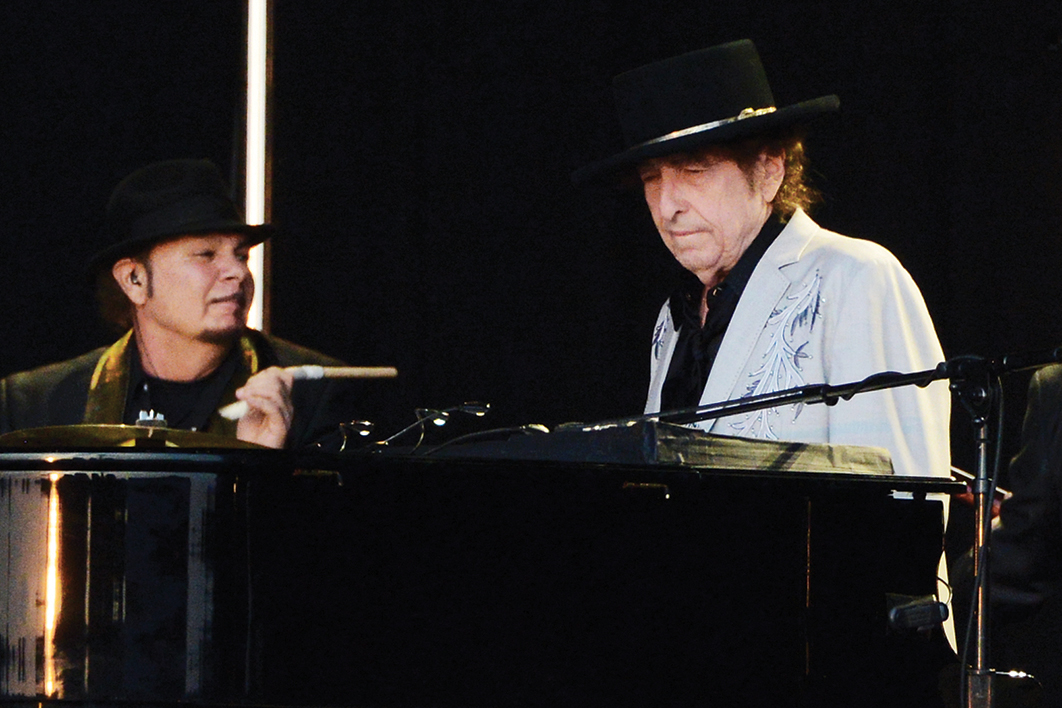Because all music consists of pitch, rhythm, tempo, timbre and dynamics, it should be possible for an interested listener to make sense of any of it, and for a listener with an analytical bent to pull it apart and see how it works. If we set aside cultural matters (whether we can — or should — is another matter), there is nothing to stop us approaching a Bach fugue, an Irish reel, a performance of an Indian raga and a slab of electronic dance music in much the same way. They are all, in the end, patterns in sound and time.
To do this, we need to adopt a version of what literary scholars call close reading. It’s a bit like stripping down a car engine. Close reading examines the actual writing — the choice of words, the syntax, the grammar — in order to reveal or construct meaning. Ideally (I would say), close reading should come first, unencumbered by theory. But even if you are an armed-to-the-teeth foot soldier in the culture wars, the close reading of a text will help you marshal evidence, the better to grind your axe. To be taken seriously, you must be across the details.
The British musicologist Wilfrid Mellers (1914–2008) knew about this. He once said that if you’re not talking technically about music, then you’re not talking about music at all — you’re talking about something else. He had initially studied English at Cambridge, where he had come under the wing of F.R. Leavis, whose own ability as a close reader was rivalled only by his insistence that literature must be read in the context of the society from which it came. In book after book, all filled with his special brand of purple enthusiasm, Mellers illuminated music from Couperin and Bach to Grainger and Poulenc, not forgetting Duke Ellington, the Beatles, Ma Rainey and Dolly Parton, but always with reference to the text, whether it was a score or a recording.
I’ve been thinking about Mellers while reading a new collection of essays by Christopher Ricks, professor of the humanities at Boston University and one of the closest readers alive. He’s been at it for a while. He published his first monograph, Milton’s Grand Style, in 1963, fought his corner against the Cambridge structuralists during the 1970s, and although not himself a poet was Oxford professor of poetry from 2004 to 2009, during which time some of these essays began as lectures. The collection is called Along Heroic Lines, its title having (at least) a double meaning.
One of these lines is the iambic pentameter (five weak/strong beats) of Milton and Shakespeare, Dryden and Keats, lines that in the hands of fine poets are endlessly flexible: “The curfew tolls the knell of parting day” (Thomas Gray); “The past is all about us and within” (Oodgeroo Noonuccal); “And now if you will find my spectacles” (John Betjeman); “I work all day, and get half-drunk at night” (Philip Larkin).
It was Samuel Johnson who called these lines “heroic,” and Ricks can spot them a mile off — and not only in poetry. That’s the point; he even finds them in one of Dr Johnson’s letters. Heightened emotion in written or spoken English leads naturally to the heroic line: this is more or less what Ricks believes.
A master of the literary party trick, Ricks begins his essay on Norman Mailer with two sonnets constructed entirely of lines (all of them pentameters) taken from Mailer’s prose, and there’s a third example at the end of the essay. He even contrives to make these sonnets rhyme. That’s pretty close reading. Geoffrey Hill’s poetry is examined, for pages, on the basis of his overuse of words ending in either “-able” or “-ible.” Ricks goes hunting for anagrams in Shakespeare’s sonnets and finds them everywhere.
Not to deny the brilliance of Ricks’s approach — it’s dazzling and always leads us back to the writing under consideration — but there are drawbacks. It’s the Leavisite notion of literature in society — the context — that is so often missing. By failing, for example, to take into account the vagaries of Jacobean publishing, Ricks presses his claims for Shakespeare’s anagrams based on what, in many cases, will be almost randomised spelling. And this is to say nothing of the Bard’s own flexible attitude to such matters, right down to the spelling of his own name.
Close reading might be our starting point, it may even be our end point, but factoring in other matters will affect meaning. Yes, that performance of a Carnatic raga creates patterns in sound; there’s a drone; there are melodic notes that push and tug dissonantly away from the tonic; there’s an accelerating pulse, with elaborate rhythmic play; there’s an ecstatic proliferation of the melodic line. One can say all this, and it will be true and based on evidence. But where is the significance?
Issues of context come up in Western classical music, too. Perhaps because the repertoire of the Western concert hall consists largely of music from the past, a knowledge of historical styles and techniques is thought to be vital to our understanding of its music. It makes sense. We want to hear — or at least believe we are hearing — what the composer heard. It’s a sort of fidelity. And yet in a literary musical tradition, such as this, a composer’s score — the more Urtext the better — might be considered a higher fidelity yet.
When Peter Pears and Benjamin Britten began performing Schubert Lieder, they knew almost nothing of the performing traditions of Schubert’s time or those that had grown up since. They had the scores, worked it out for themselves, and the results, whether you like them or not, are undeniably compelling. This was also essentially pianist Glenn Gould’s approach to Bach; and, as a conductor, it was Pierre Boulez’s attitude to more or less everything. Play the notes accurately, balance all the parts, and the music will take care of itself. Style is affectation; tradition is bad habits. (I’m exaggerating, somewhat.)
But a complete absence of historical or cultural context can also lead us astray. The point at which Wilfrid Mellers and Christopher Ricks most closely intersect is over the work of Bob Dylan. Both wrote book-length studies: Mellers’s is A Darker Shade of Pale: A Backdrop to Bob Dylan (1984); Ricks’s is Dylan’s Visions of Sin (2003).
Mellers, as the word “backdrop” in his subtitle suggests, is all about context. He picks apart the songs to show their workings, but his analyses are in the context of the oral traditions from which Dylan sprang. Ricks’s enormous volume discusses the words alone, the words on the page, and of course he does it brilliantly, but you’d be forgiven for concluding that Milton and T.S. Eliot meant more to Dylan than Woody Guthrie or Blind Willie McTell. To separate Dylan’s lyrics from their musical context — especially from the music in Dylan’s voice — is to miss much of the point of him.
I do agree with Mellers’s maxim. Talking about music must be technical, the equivalent of literary close reading. But if you don’t have the context too, you may miss the forest for the trees. •




